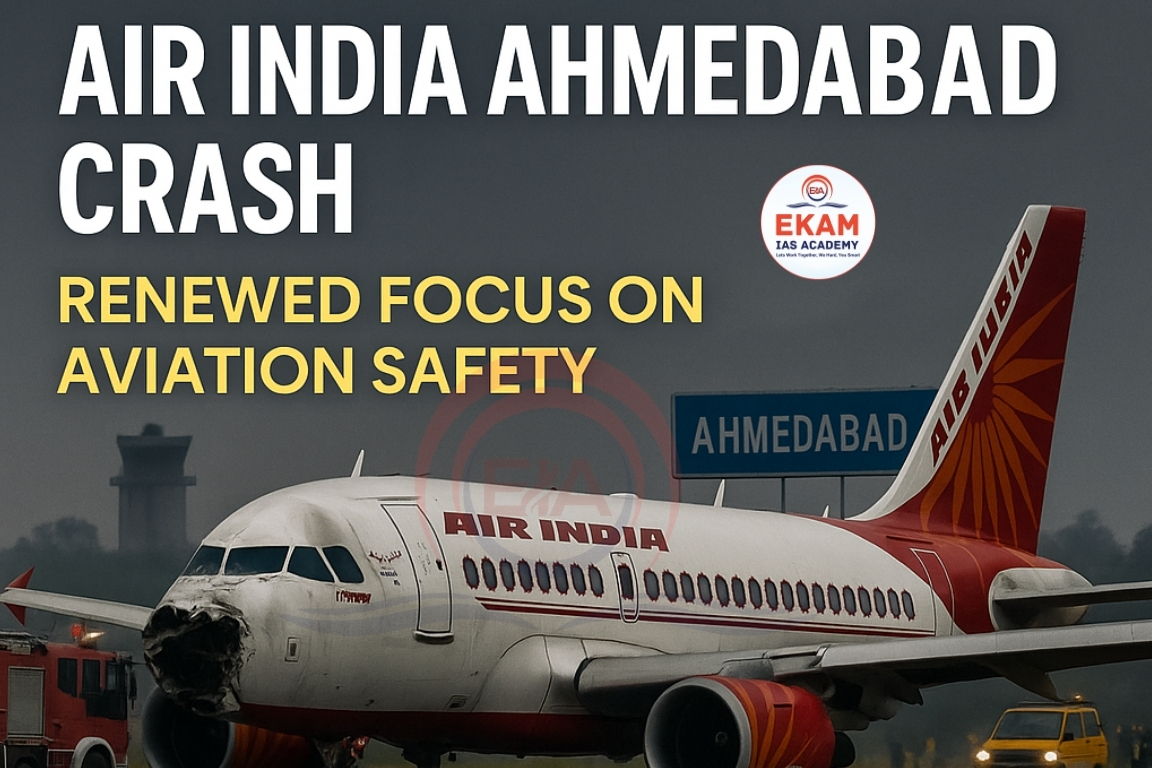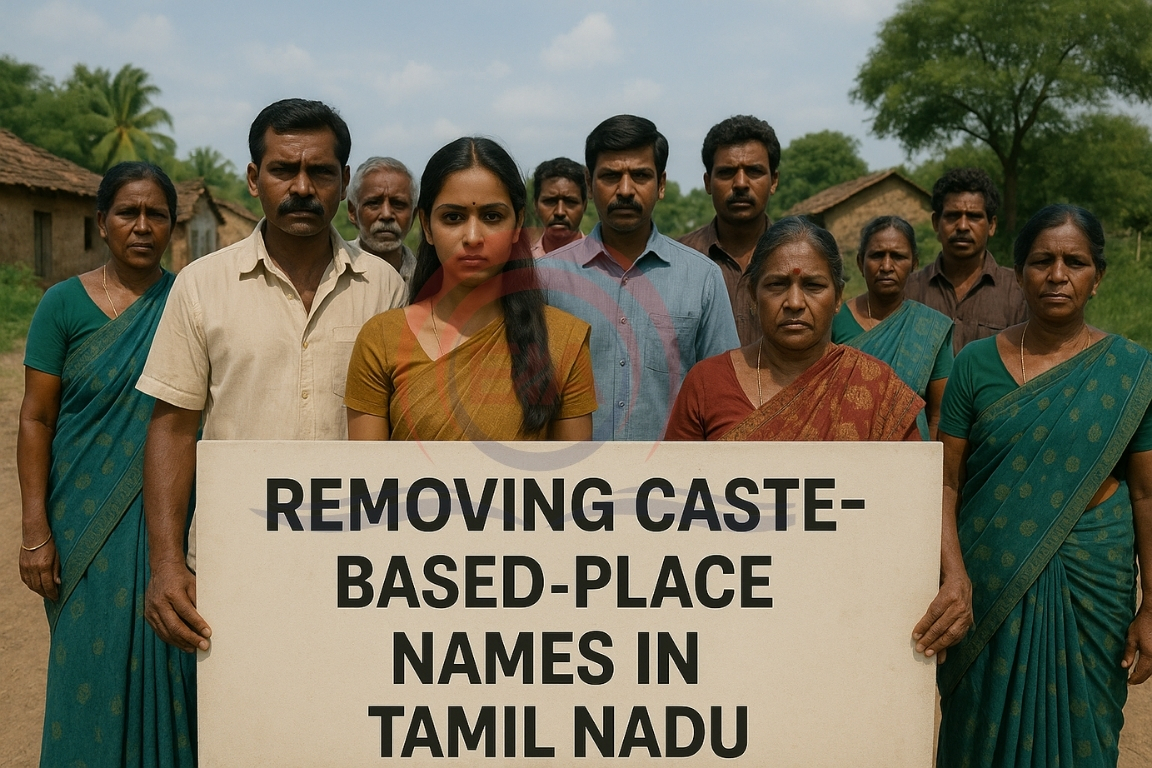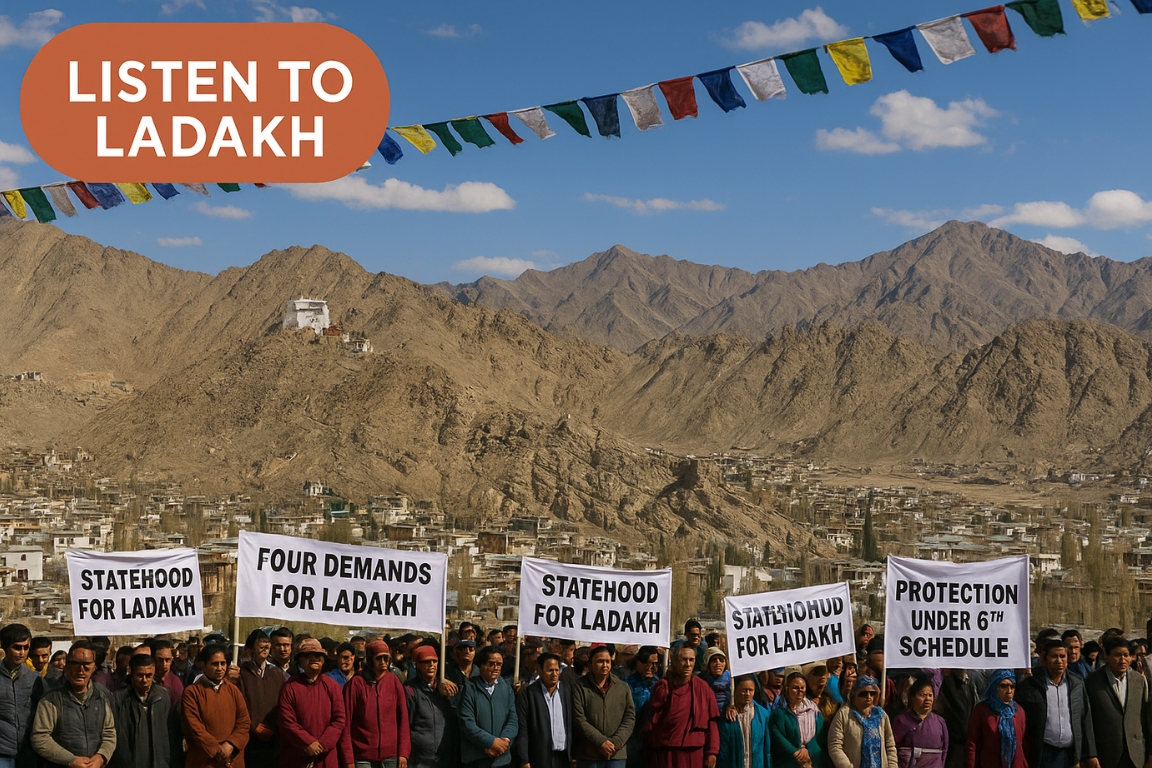A tragic crash of Air India flight AI171 in Ahmedabad on June 12, 2025, killed over 300 people. The disaster has sparked serious concerns over India’s aviation safety, training, and regulatory mechanisms.
Crash of Air India
- The crash involved a Boeing 787-8 “Dreamliner” shortly after take-off.
- Only one passenger survived; it marked the first total loss of this aircraft type globally.
- Experts cite technical, environmental, and procedural lapses as possible causes.
Regulatory and Safety Failures
- India’s aviation oversight bodies, like DGCA and AAI, are often run by generalist bureaucrats rather than aviation experts.
- Political interference and corruption often weaken safety audits and accident reviews.
- ICAO norms are violated, such as identifying crew publicly before inquiry completion.
Training & Operational Lapses
- The flight’s captain was a Line Training Officer—raising questions on co-pilot readiness.
- Mistakes like failure to retract landing gear indicate poor cockpit coordination.
- Decline in overall pilot training standards across airlines due to weak enforcement.
Suspected Causes of the Crash
- Likely bird hit caused engine damage or compressor stall.
- Possibility of foreign objects on the runway, like in the 2000 Concorde crash.
- CCTV showed landing gear unretracted, possibly indicating distraction or power loss.
Infrastructure & Zoning Issues
- The aircraft collided with a high-rise building, showing lack of enforcement on airport zoning.
- “No Objection Certificates” for nearby buildings are often cleared without proper safety checks.
Past Aviation Disasters in India
- Major crashes include: 1990 (Bangalore), 2000 (Patna), 2010 (Mangaluru), 2020 (Kozhikode).
- In all cases, systemic reforms were delayed or ignored.
Reforms & Corporate Response
- Tata Group, which owns Air India, has initiated the Vihaan.AI roadmap for transformation.
- Appointed a Head of Group Safety and launched internal quality initiatives.
- International teams are aiding crash investigation for transparency.
Conclusion
This incident highlights deep gaps in aviation safety, from poor training to regulatory oversight. Strengthening institutional accountability, ensuring expert leadership, and enforcing global safety norms are crucial to protect lives in India’s fast-growing aviation sector.






Getting it virtuous, like a well-disposed would should
So, how does Tencent’s AI benchmark work? Prime, an AI is foreordained a sample reproach from a catalogue of as overkill debauchery 1,800 challenges, from systematize occurrence visualisations and web apps to making interactive mini-games.
In this broad clarity the AI generates the pandect, ArtifactsBench gets to work. It automatically builds and runs the corpus juris in a coffer and sandboxed environment.
To look at how the assiduity behaves, it captures a series of screenshots ended time. This allows it to stoppage help of things like animations, stamp changes after a button click, and other high-powered owner feedback.
Conclusively, it hands terminated all this bear provide to – the lawful solicitation, the AI’s cryptogram, and the screenshots – to a Multimodal LLM (MLLM), to law as a judge.
This MLLM authorization isn’t high-minded giving a obscure философема and as contrasted with uses a astray, per-task checklist to swarms the consequence across ten conflicting metrics. Scoring includes functionality, possessor duty, and surge with aesthetic quality. This ensures the scoring is unfastened, compatible, and thorough.
The conceitedly doubtlessly is, does this automated opt for confidently have a right helpful taste? The results propinquitous it does.
When the rankings from ArtifactsBench were compared to WebDev Arena, the gold-standard layout where pertinent humans ballot on the most versed AI creations, they matched up with a 94.4% consistency. This is a abnormality tinge from older automated benchmarks, which not managed in all directions from 69.4% consistency.
On home in on of this, the framework’s judgments showed all over and above 90% concord with maven fallible developers.
https://www.artificialintelligence-news.com/